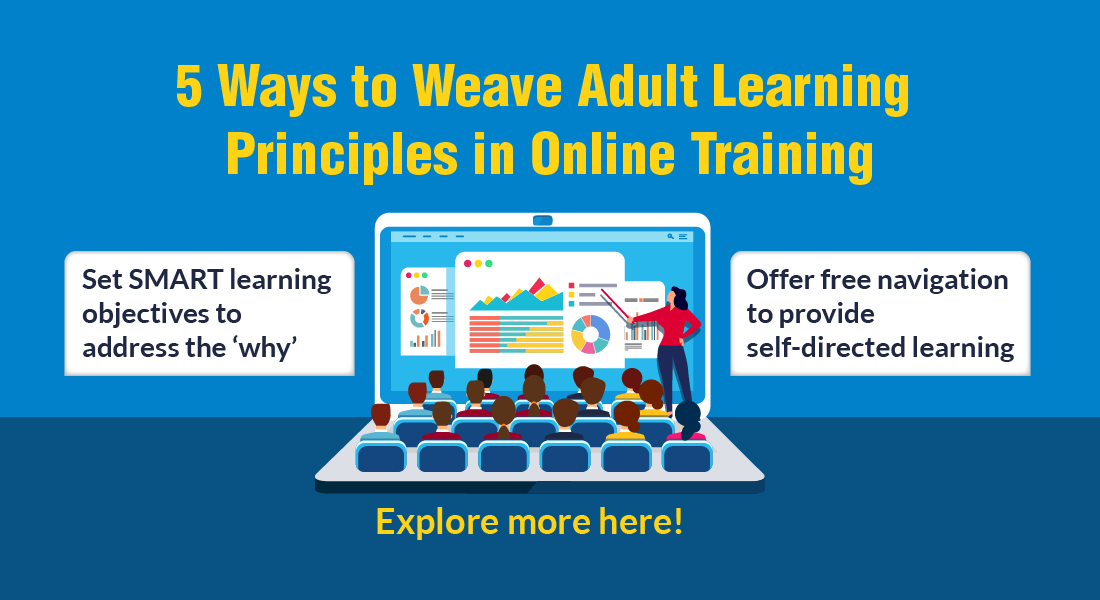A Peek Into the Future of Instructional Design
Find out the trends that are influencing instructional design.

Change is inevitable. Change is constant – Benjamin Disraeli
This is a fact; instructional design (ID) is going through dynamic changes as a fallout of research in the fields of education, technology, and learner behavior. The best part is, these changes are happening here and now, and the journey from the drawing board to the screen is getting shorter. Competent organizations are tuned into these trends and already implementing them. This blog is an attempt to explore the trends that are impacting and will influence ID in the future. Excited to know more? Read on.
Research insights into the science of learning
ID will improve when designers get more insights into how people learn. Research in this field continues to influence learning design and will do so in the future as well.
One of the fundamental aims of ID is to ensure learners understand the information being delivered and also enable them to retain that information for future use. To this end, instructional designers need to understand the basics of the cognitive load theory, which suggests learners can learn and retain information effectively, if it is delivered without ‘overloading’ their mental capacity. ID is based on understanding the schemas of learners (the series of structures that enable them to solve problems and think). With more research in the field, ID will continue to focus on these areas to make learning effective:
- Spacing – provide, review, and test information so that learning is in spaced intervals, providing better retention
- Topic switching and activities to maintain concentration
- Reduce cognitive load by keeping content simple and using a sequential order
- Try and engage auditory and visual senses so that learners can connect to the information
Research in adult learning theory indicates that prior to designing a course, an assessment of what learners already know is important. When designing for adults, instructional designers should recognize what they know, respect this knowledge, and allow them to utilize it in the course. Learning should be designed to:
- Connect to long-term memory (things the learner already knows), which will make neural networks stronger
- Provide concrete examples and questions that will activate what they already know
Using emotional elements can help learning stay in long-term memory. The best way to do this is through storytelling. This is a clever technique, because humans connect to stories and remember them for their emotional impact. When you remember a story, you remember the point being made in it and ideally, the point becomes actionable. Since stories are retained in the memory longer than facts and data, they should form an integral part of the ID strategy in a course.
To further this point, Daniel Pink, author of Drive and A Whole New World says, “Stories are easier to remember because stories are how we remember. When facts become so widely available and instantly accessible, each one becomes less valuable. What begins to matter more is the ability to place these facts in context and to deliver them with emotional impact.”
Stories can be incorporated in online courses in the form of:
- Comic strips
- Interactive timelines
- Audio narratives
- Videos
Personalization of learning
ID will continue to take advantage of the analysis of big data to personalize learning experiences by getting better insights into learner engagement. Learning can be designed to cater to individual needs and requirements.
Big data actually allows us to quantify how learners learn best. Using this information will help designers avoid a ‘one-size fits all’ ID strategy or design for the average learner. With big data, we can identify the modes of delivery individual employees prefer. This data will help instructional designers reach learners based on their learning styles through the best learning tools available to them.
Instructional designers will no longer be forced to impose learning in a style learners may not prefer. ID will lean toward creating multiple modalities for the same information and learning strategies will be enhanced for individual preferences to be truly personalized.
Creating “pull” rather than “push” resources for adults
With personalization, ID will move toward offering learners the flexibility to learn what they want or ‘pull’ rather than developing courses which follow a similar cycle based on traditional styles of learning, in other words, ‘push’.
Pull learning adheres to the adult learning need to be autonomous. This type of learning is suited to the modern workplace where employees search for knowledge suited to their needs and is contextual so that it can be translated into action. The learner will pull the knowledge required to do his job well.

To offer demand-driven learning to an audience that is tech-savvy, ID will have to utilize the power of technology to design learning that is accessible on all devices. ID will veer more toward delivering learning in bite-sized pieces so that learners can access what they want, anytime and anywhere.
Mobile learning
The growing ubiquity of mobile phones has given a fillip to mobile learning. The focus will be on developing nano learning modules – small and coherent chunks of information designed to be delivered to learners on mobile devices.
These small but organized nuggets of learning need to be designed and developed rapidly and the ID strategy will be based on how learners will interact with the courseware while they are on-the-go. The size is ideal for the learner who accesses them on his mobile in short intervals during his work hours and when he needs it. The modules should be designed to help faster cognitive processing for faster application.

ID strategy will be designed to enable learners retain information; short assessments can be included to evaluate the learner. They will be self-contained to allow for just-in-time learning and designed keeping the reusability factor in mind, so that they can be used as part of a larger course and also accessed independently.
To conclude, research findings in the science of learning, the personalization of learning, tendency toward creating ‘pull’ learning, and the increasing popularity of mobile learning are some of the factors that are impacting and will influence the shape ID will take in the future. Can you think of other factors? Do share them through your comments.





